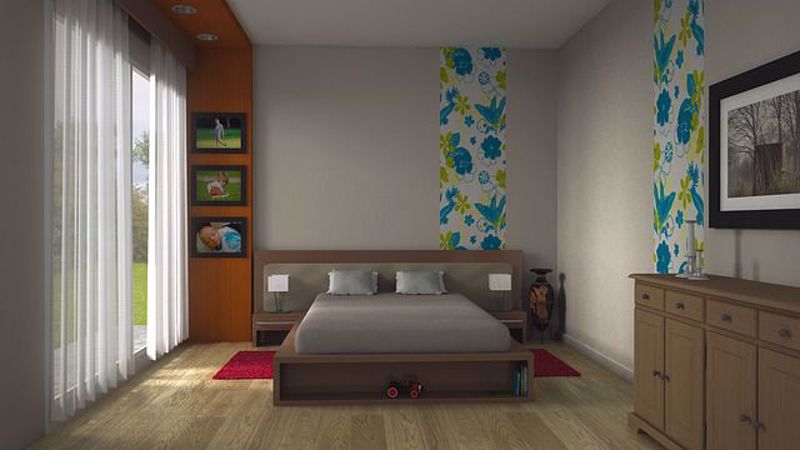Lowes has a wonderful selection of wallpaper and with a Lowes Money Off Coupon from We Are Coupons you can save money on every roll. But what is the background of Wallpaper, when did the idea of wallpapering begin? In this article we will try and get to the bottom of it.
Wallpaper first became popular with the gentry and upper classes in Europe during the Renaissance. This was thanks to the introduction of the woodcut printmaking technique that made printed products more freely available during this time.
It started with Tapestries
Up until the creation of the first wallpapers in Europe upper class society used tapestries to cover and decorate the walls of their large homes. This tradition first started during the Middle Ages and these tapestries were used to add color and insulation to large stone rooms. Tapestries and tapestry making was extremely expensive and was only available to the most affluent families. With the introduction of new printing methods during the Renaissance less affluent members of the upper class turned to wallpaper to brighten up their households.
First Printed Wallpaper
The first types of wallpapers printed featured scenes that were very similar to those depicted on the tapestries found in many older houses and sometimes were simply large sheets of printed paper that hung loosely on the walls. As time progresses paste was used to stick them to the wall and often several sheets of paper were used to create large scenes on walls. Many notable artists at this time made a good living out of designing prints for wallpapers, including Albrecht Dürer, who created both large picture prints and ornament prints that were used for wall-hanging.
Growing Wallpaper Use
England and France became the largest manufacturers and users of wallpaper during the 1500's. In England it became extremely popular under Henry VIII as he was excommunicated from the Catholic Church which resulted in a drop in the tapestry trade from France. Without a regular supply of expensive tapestries, the English gentry and aristocracy turned to wallpaper.
During the Protectorate in Britain that was established under Oliver Cromwell, the manufacture of wallpaper was halted. This was due to the fact that it was seen as a frivolous item by the Puritan Cromwellian government. However, with the death of Cromwell and the restoration of Charles II, wealthy people across England once again turned to wallpaper as a form of decoration and increased the demand again.
In 1712, due to the fact that wallpapers were now primarily used by the wealthy, Queen Anne introduced a wallpaper tax that was only abolished in 1836. This however did not deter the use of wallpaper as by the mid-eighteenth century Britain was the biggest wallpaper manufacturer in Europe.
Ups and Downs of Wallpaper
During the Napoleonic Wars fought by the greater European powers, trade between Europe and Britain all but dried up. This resulted in the end of the wallpaper market as it was and it was not until the introduction of steam-powered printing presses in 1813 that once again the demand for wallpaper grew. However, there was now a larger demand locally in the in the US and the UK as cheap mass-produced wallpapers made it very affordable to working-class people.
By the early twentieth century, wallpaper in Europe and the America's has become one of the most popular household items available. During the late 1980s however, wallpaper again started to decline in popularity and was slowly replaced by non toxic paints that are easier to remove and change. Today, since about 2020 Wallpaper has once again found favour.




